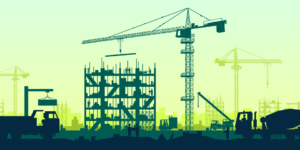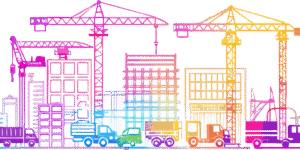The commercial real estate sector is roaring back to life. To some, the market may look remarkably similar compared to before the pandemic, but savvy industry insiders know that it isn’t quite the same.
The truth is that several aspects of the market may have changed forever. According to Pew Research, 36% of Americans say their jobs have changed since the beginning of the pandemic. This means millions of people are working from home instead of in the office, in a new city, in a different industry, or perhaps not working anymore.
To help guide you toward the projects that’ll help secure strong returns, here are the commercial real estate project types that are heating up in 2022.
3 Hottest Commercial Real Estate Project Types
The key to wise decision-making in our industry is to make sure you’re developing suitable projects that are in demand. We encourage you to look for promising opportunities within diverse asset classes and learn more about the hottest project types listed below.
Stockrooms for e-Commerce Businesses
Nowadays, more people are ordering items online, and fewer people are shopping in person. This trend started slowly over the past decade and kicked into high gear during pandemic safety measures.
Our country saw incredible year-over-year e-commerce growth, which surged from 14.8% in Q1 of 2021 to 44.5% in Q2. This means the stockroom and distribution centers are now a priority over storefront real estate space.
In the past two years, retailers have needed to set up storage space to fulfill orders coming through multiple channels. They must also ensure their warehouse is large enough for larger order volumes.
Savvy retailers recognize wasted labor hours in stocking storefront shelves and then pulling items back off to ship to customers’ homes. This is why retailers are looking for larger stockrooms and smaller showrooms.
Coworking Space
A recent PWC report said that 60% of real estate professionals agreed that office tenants are looking to expand spaces for new ways of collaboration and workplace interaction while complying with social distancing measures and healthier work practices. One such solution: coworking spaces.
This describes an organizational workspace system where desks are not assigned to one person working for one company. Instead, they are used by different people at different times on an ad hoc basis. Multiple workers, often either freelancers or those who work remotely, use a single physical workstation during different periods. Think of it like renting a conference center for an event; you schedule a time slot, and when you’re finished, the space is cleaned for the next group.
Developing a commercial real estate building with coworking space is worth considering. Industry insiders think that commercial real estate buildings providing tenants with flexible space options, like hot desks and other key features, will be more sought after. New tenants are looking for touchless technology and improved indoor air quality. Your new commercial building will be favorable for new leases by including these features in your development plans.
Multifamily
The Motley Fool tells us that the multifamily sector looks promising this year. “Multifamily vacancies hit 4.7% in the third quarter of 2021, reverting back to levels seen at the end of 2019,” Victor Calanog, Head of CRE Economics for Moody’s Analytics, told The Motley Fool.
The housing market is having a tough time keeping up with changing demographics. Millennials are also entering a life stage where they’re trading in years of city life for larger housing options in less-dense suburban markets (more on this in a moment). The problem is baby boomers aren’t leaving their houses and moving into residential care facilities like generations in the past.
Housing Wire tells us that the older generation’s desire to age outside of traditional nursing home facilities creates a bottleneck in single-family homes. The “near-gridlock,” as the Chicago Tribune calls it, is keeping about 1.6 million houses off the national market and leading to a rise in multifamily housing to meet the needs of young professionals and families. These people want and need multifamily living that caters to a growing family and offers convenient access to their favorite spots in the community.
Suburban Living
The number of people able to work from home has skyrocketed since the emergence of COVID-19 over two years ago. These professionals can now leave city life behind, working from the suburbs without a lengthy commute, and many choose to live in multifamily buildings. The result is that suburban multifamily homes, apartments, condos, and townhouses, are taking the real estate market by storm!
The rise of multifamily housing in the suburbs isn’t the only shake-up where people live. The COVID-19 pandemic magnified and fast-forwarded an ongoing shift away from expensive downtown areas and toward smaller, more affordable markets. Buyers are now looking to live in charming towns close to metropolitan areas. This makes an investment in developing suburban communities a safe one.
How the Right Real Estate Development Software Will Help Your Team
Commercial real estate development teams looking to capitalize on the market changes quickly. Simply choosing to take on a development project in a hot sector is only the first step. You will want to maximize your returns as much as possible. The question is – how? Through the use of real estate development software.
Northspyre is a proactive intelligence platform that empowers real estate development teams with AI, automation, and analytics to achieve easier, more predictable outcomes on complex projects. What this means for your team is that every decision is backed by data instead of choices made on gut instinct.



